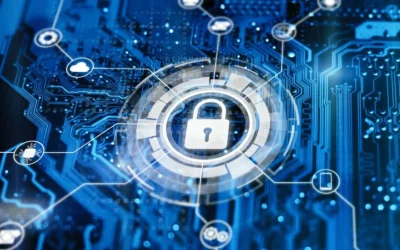Cybersecurity threats are no longer confined to shadowy figures in dark basements. Today, the biggest security weaknesses often come from within, unintentionally caused by human error. Meanwhile, the rise of remote work has introduced a new set of challenges for IT security. This blog post will explore two crucial aspects of a robust IT security strategy: employee security awareness training and security measures for remote work environments. By focusing on these areas, you can build a stronger “human firewall” and significantly reduce your risk of cyberattacks.
The Power of Educated Employees
Imagine your employees as the first line of defense against cyber threats. This analogy holds true – employees play a critical role in safeguarding your organization’s data and systems. Unfortunately, many employees lack the awareness of common cyber threats and best practices. Phishing emails can appear deceptively legitimate, malware can hide behind seemingly harmless attachments, and social engineering tactics can exploit human vulnerabilities.
Employee Security Awareness Training: Building a Culture of Security
Investing in employee security awareness training empowers your team to identify and avoid cyber threats. Here are some key aspects of effective training:
- Regular Training Sessions: Don’t rely on one-off training sessions. Schedule regular refreshers to keep cybersecurity top-of-mind for employees.
- Interactive and Engaging Content: Ditch the dry lectures! Opt for interactive modules, phishing simulations, and real-world scenarios to keep employees engaged and reinforce learning.
- Targeted Training: Tailor training content to employee roles and responsibilities. For example, finance staff will need a deeper understanding of financial fraud attempts, while marketing teams may be more susceptible to spear phishing emails targeting specific campaigns.
- Phishing Simulations: Test your employees’ ability to identify phishing attempts. Send simulated phishing emails with clear guidelines for reporting suspicious messages. Analyze the results and provide additional training where needed.
- Reporting Mechanisms: Establish a clear and easy-to-use reporting system for employees to report suspicious emails, malware infections, or any security concerns.
Benefits of Educated Employees:
- Reduced Risk of Phishing Attacks: Trained employees are less likely to fall victim to phishing scams, a major entry point for cyberattacks.
- Improved Security Posture: A security-conscious workforce becomes a natural extension of your IT security measures.
- Enhanced Employee Morale: Employees who feel empowered to protect themselves and the company experience a sense of ownership and increased morale.
- Reduced Business Risk: Fewer successful cyberattacks translate into lower financial losses, reputational damage, and operational disruptions.
Securing Your Remote Workforce
The rapid rise of remote work has introduced new security challenges. Employees working outside the traditional office environment are often accessing company data and systems from personal devices and unsecured networks. Here are some essential security measures for remote work environments:
- Secure Remote Access: Implement a secure remote access solution like a virtual private network (VPN) to encrypt data transmissions between employees’ devices and your company network.
- Device Security Policies: Enforce strong password policies and require employees to use antivirus and anti-malware software on all devices used for work purposes.
- Data Encryption: Encrypt sensitive data at rest and in transit to further protect it from unauthorized access.
- Cloud Security: If you utilize cloud-based applications for collaboration or storage, ensure you have robust access controls and data encryption measures in place.
- Least Privilege Access: Grant employees access only to the data and applications necessary for their job functions.
- Multi-Factor Authentication (MFA): Enable MFA for all logins to company accounts and resources, adding an extra layer of security beyond passwords.
- Remote Access Management: Implement tools to remotely manage and secure employee devices, allowing for secure data wipes and access revocation in case of lost or stolen devices.
- Communication and Training: Clearly communicate your remote work security policies to your employees. Ensure they understand their responsibilities in protecting company data and systems.
Building a Comprehensive Security Strategy
Employee security awareness training and remote work security measures are two essential components of a comprehensive IT security strategy. By empowering your employees and securing your remote workforce, you can significantly strengthen your defenses against cyber threats. Remember, cybersecurity is an ongoing process. Regularly review your security policies, update your training programs, and stay informed about evolving cyber threats.
Partnering with Techvera: Beyond the Basics
While this blog post provides a strong foundation for employee security awareness and remote work security, Techvera offers a comprehensive suite of IT security services to take your defenses to the next level. Our team of experts can conduct in-depth security assessments, implement advanced security solutions, and provide ongoing monitoring and support. Contact Techvera today.




